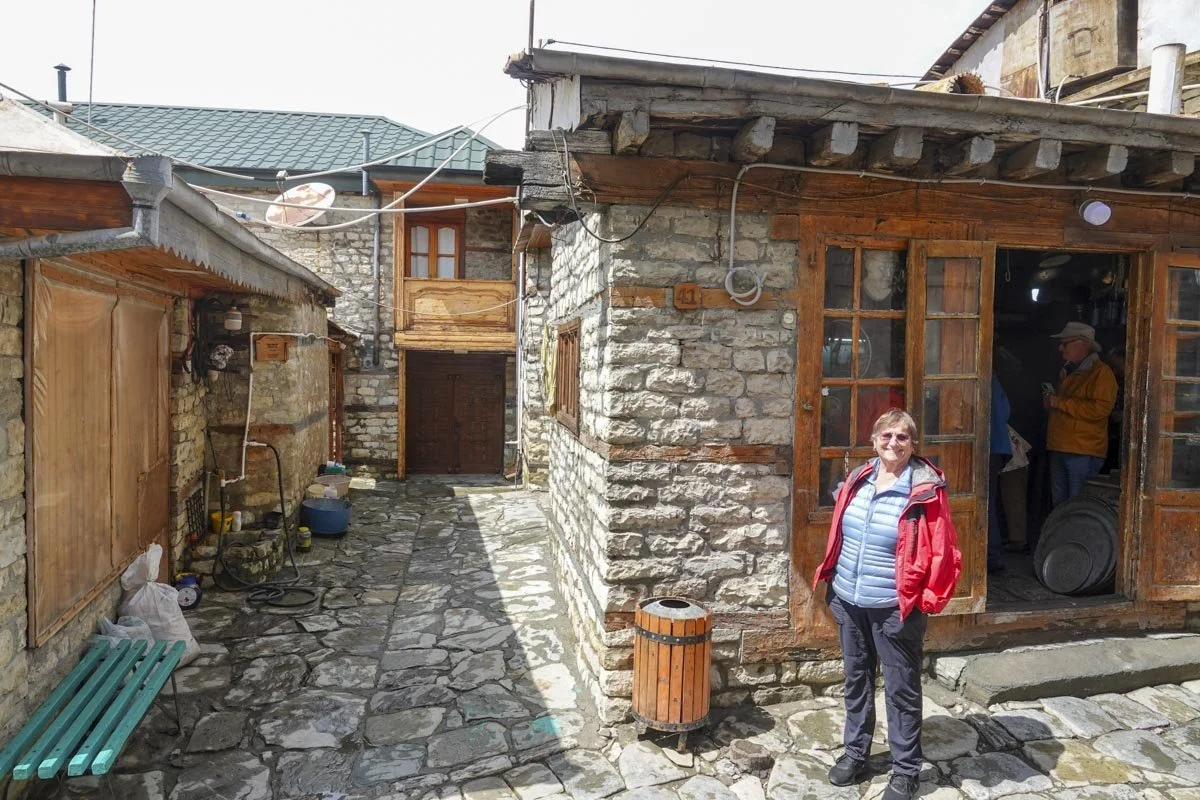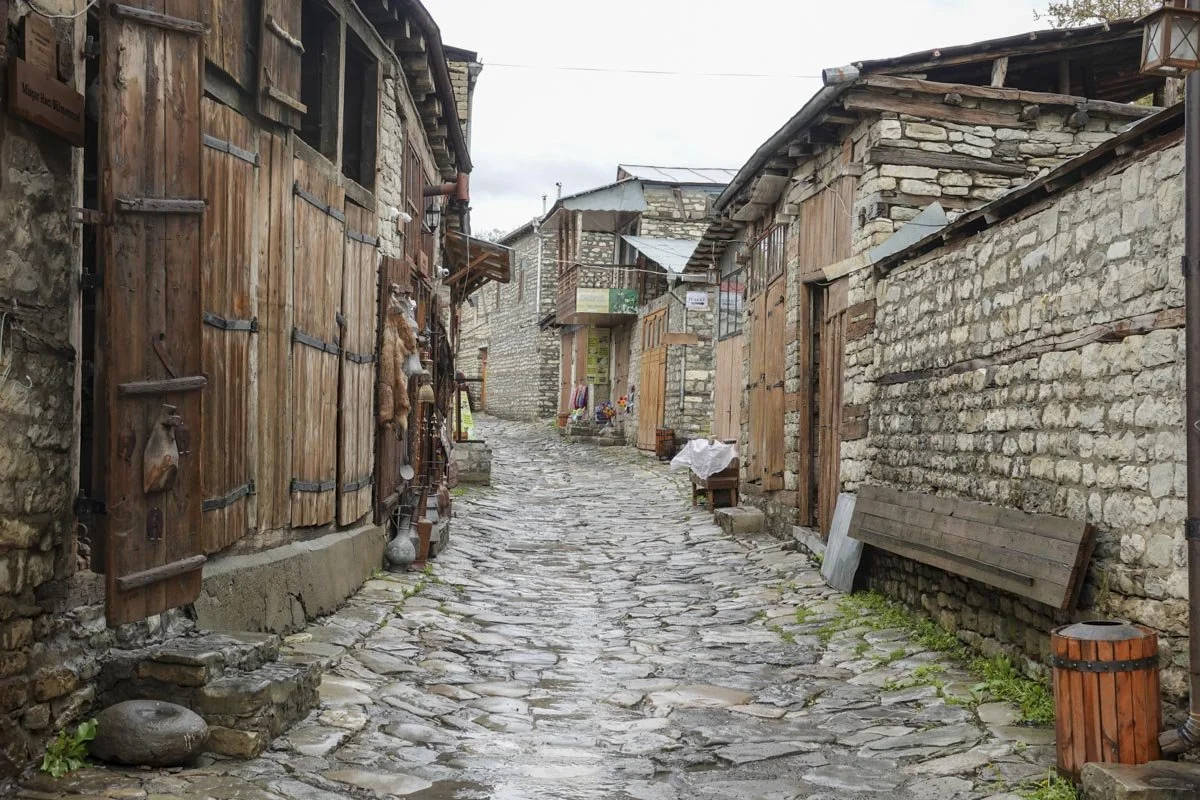Lahic Coppersmith
After lunch, we went out to visit our host's coppersmith workshop and store. That was the main reason for our visit to Lahic. Here, they still use some ancient methods for processing copper to make everyday tools and craft items. Our host said that he learned copper-smithing from his father. He also said that he had nine siblings and with all of his kids, and his nephews, and nieces, not a single one wants to continue on with the family copper business, so it will die out with him.
In the first photo, you can see Vicky standing there. To her left, if you go down the alley and through the wall opening, then left, you enter a courtyard and the house where they live is to the left. To her right is our host's retail copper store. Their home, workshop, and business are all right together.
We first went into our host's workshop. He does all sorts of work with copper and brass in his workshop. He demonstrated some work for us. It was a bit dusty in his workshop, to say the least. but it was fascinating to look through all the different things that he has made.
Next, we can see his retail shop with items that he makes and sells. Vicky purchased two small coasters, like the ones that you see on the shelf.
The village of Lahic is really a step back in time. It's been there for hundreds of years and is really a nice cozy little village, with friendly people. The streets also double as rainstorm runoff canals. The steep mountains send massive amounts of water down into Lahic.
I didn't see very much of the many other crafts in town. Most were still closed after the big storm. I only saw a couple of open stores and will only include two photos. Our time in Lahic was short but we enjoyed every minute of it. My highlight sighting below was the canned walnuts (second from right). I never knew anyone to can walnuts before. The next photo will give an idea of how cold it gets here in winter.
Our drive down off the mountain was also interesting. If you look at the first two photos of the previous post, you can understand why. The road, in places, looked like a river bottom. It was covered with small boulders, rocks, and gravel. The town already had people out with tractors and shovels clearing the road. The steep shale mountains shed rocks like crazy.






